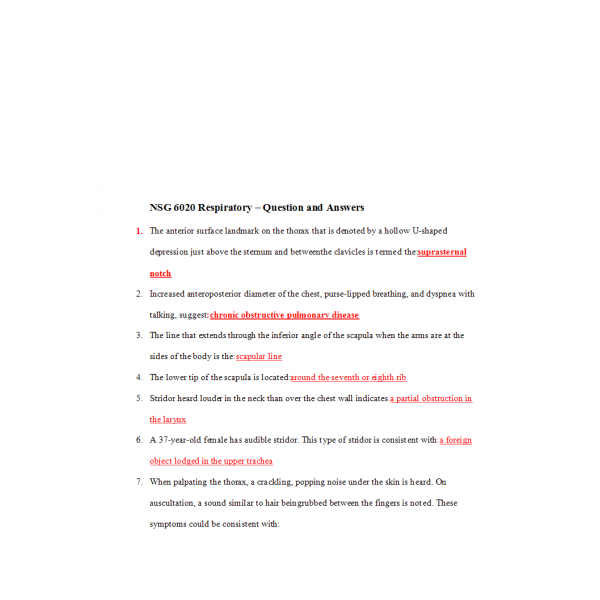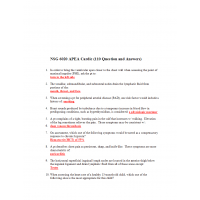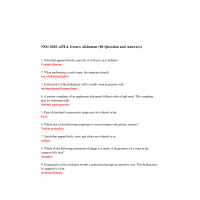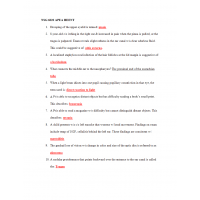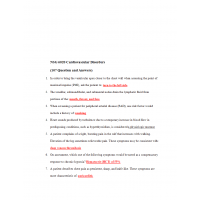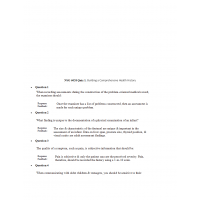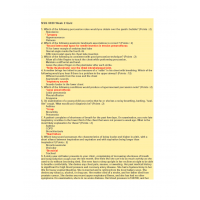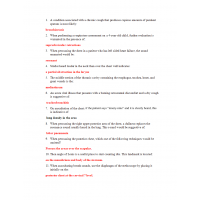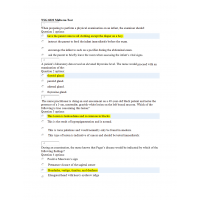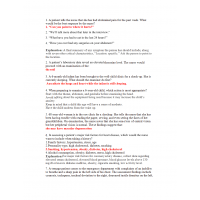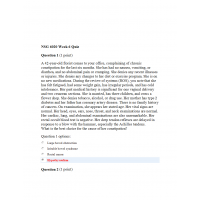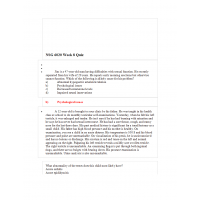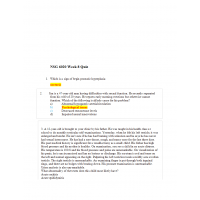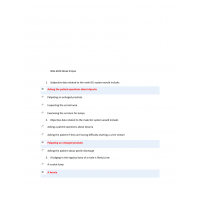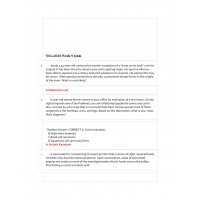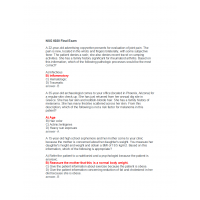- The anterior surface landmark on the thorax that is denoted by a hollow U-shaped depression just above the sternum and betweenthe clavicles is termed the
- Increased anteroposterior diameter of the chest, purse-lipped breathing, and dyspnea with talking, suggest
- The line that extends through the inferior angle of the scapula when the arms are at the sides of the body is the
- The lower tip of the scapula is located
- Stridor heard louder in the neck than over the chest wall indicates
- A 37-year-old female has audible stridor. This type of stridor is consistent with
- When palpating the thorax, a crackling, popping noise under the skin is heard. On auscultation, a sound similar to hair beingrubbed between the fingers is noted. These symptoms could be consistent with:
- To locate the twelfth rib, palpate
- A 3-year-old presents with a history of fever and cough over the past 24 hours.Findings on exam reveal: temperature of 102F, apical heart rate of 157 beats/minute, and respiratory rate of 40breaths/minute. Tachypnea in this child is most likely related to
- When palpating the thorax, a crackling, popping noise under the skin is heard.On auscultation, a sound similar to hair being rubbed between the fingers is noted.These symptoms could be consistent with
- One of the anterior thoracic landmarks is the costal angle. It is located
- A patient who walked into the examination room, may be observed to be sitting and leaning forward in his chair. Lips were pursedduring exhalation and arms are supported on the table. This position could be consistent with patients who have
- Atypical respiratory symptoms associated with gastroesophageal disease (GERD) may include all of the following except
- Diminished breath sounds should be interpreted as
- A 65-year-old obese man with a past medical history of hypertension complains of increased fatigue during the day. Thepractitioner orders a polysomnogram to test for
- An acute viral illness that presents with a burning retrosternal discomfort and a dry cough is suggestive of
- Breath sounds consisting of a full inspiratory and expiratory phase with the inspiratory phase usually being louder and normallyheard over the trachea and larynx are considered
- On auscultation of the chest, if the patient says "ninety-nine" and it is clearly heard, this is indicative of
- The palpation technique used to assess respiratory expansion of the chest is placing the hands on the eight or tenth ribsposteriorly with the thumbs close to the vertebrae, sliding the hand medially and grasping a small fold of skin between the thumbs. Then
- When trying to differentiate between hemoptysis or blood streaked material, which one of the following observations is correct?
- Breath sounds heard over the periphery of the lung fields are
- A condition associated with a chronic cough that produces copious amounts of purulent sputum is most likely
- Which technique best determines whether the tissues in the chest are air-filled, fluid-filled, or solid?
- When percussing the chest in a patient who has left sided heart failure, the sound emanated would be
- To document chest findings located below the scapulae, which one of the following terms would be used?
- The middle section of the thoracic cavity containing the esophagus, trachea, heart, and great vessels is the
- Respiratory effort in the neonate is initiated at birth as a result of
- The midaxillary line
- To document chest findings located between the scapulae, which one of the following terms would be used?
- When percussing the lower posterior chest, begin by
- When examining a patient for chest expansion, begin by
- When percussing the posterior chest, which one of the following techniques would be omitted?
- When inspecting the chest for respiratory effort, which one of the following is not part of the inspection?
- The line that bisects the center of each clavicle at a point halfway between the palpated sternoclavicular and acromioclavicular joints is the
- The angle of Louis is a useful place to start counting ribs. This landmark is located
- The hilar region of the lungs describes
- A patient presents with a productive cough. Which one of the following descriptions of the mucus is correct?
- When performing a respiratory assessment on a 4-year-old child, further evaluation is warranted in the presence of
- Breath sounds consisting of a full inspiratory phase and a shortened and softer expiratory phase normally audible over the hilarregion of the chest are termed
- Breath sounds auscultated over the periphery of the lung fields are quiet and wispy during the inspiratory phase followed by ashort, almost silent expiratory phase. These breath sounds are considered:
- When auscultating breath sounds, use the diaphragm of the stethoscope by placing it initially on the
- Orthopnea is typically associated with all of the following conditions except
- To document chest findings located at the lowermost portion of the lungs, which one of the following terms would be used?
- Pain from pleurisy may be referred to the
- Which one of the following infants should be seen immediately by the nurse practitioner?
- A patient who presents with a long history of cigarette smoking exhibits a dry to productive cough with dyspnea and weight loss.These symptoms could be consistent with
- When percussing the right upper posterior area of the chest,a dullness replaces the resonance sound usually heard in the lung.This sound would be suggestive of
- Retractions are observed in all the following areas except the
- When auscultating breath sounds in a patient who has left sided heart failure, the breath sounds are
- Adventitious breath sounds, such as crackles, are
- Breath sounds heard on chest over the hilar region are
- Factors that aggravate costochondritis may include
- The anterior surface landmark on the thorax that is denoted by a hollow U-shaped depression just above the sternum and betweenthe clavicles is termed the
| Institution & Term/Date | |
| Term/Date | South University |
NSG 6020 Respiratory - Question and Answers
- Product Code: 2019
- Availability: In Stock
-
$30.00
Related Products
NSG 6020 APEA Exam Cardiac
$30.00
NSG 6020 APEA Exam HEENT
$35.00

